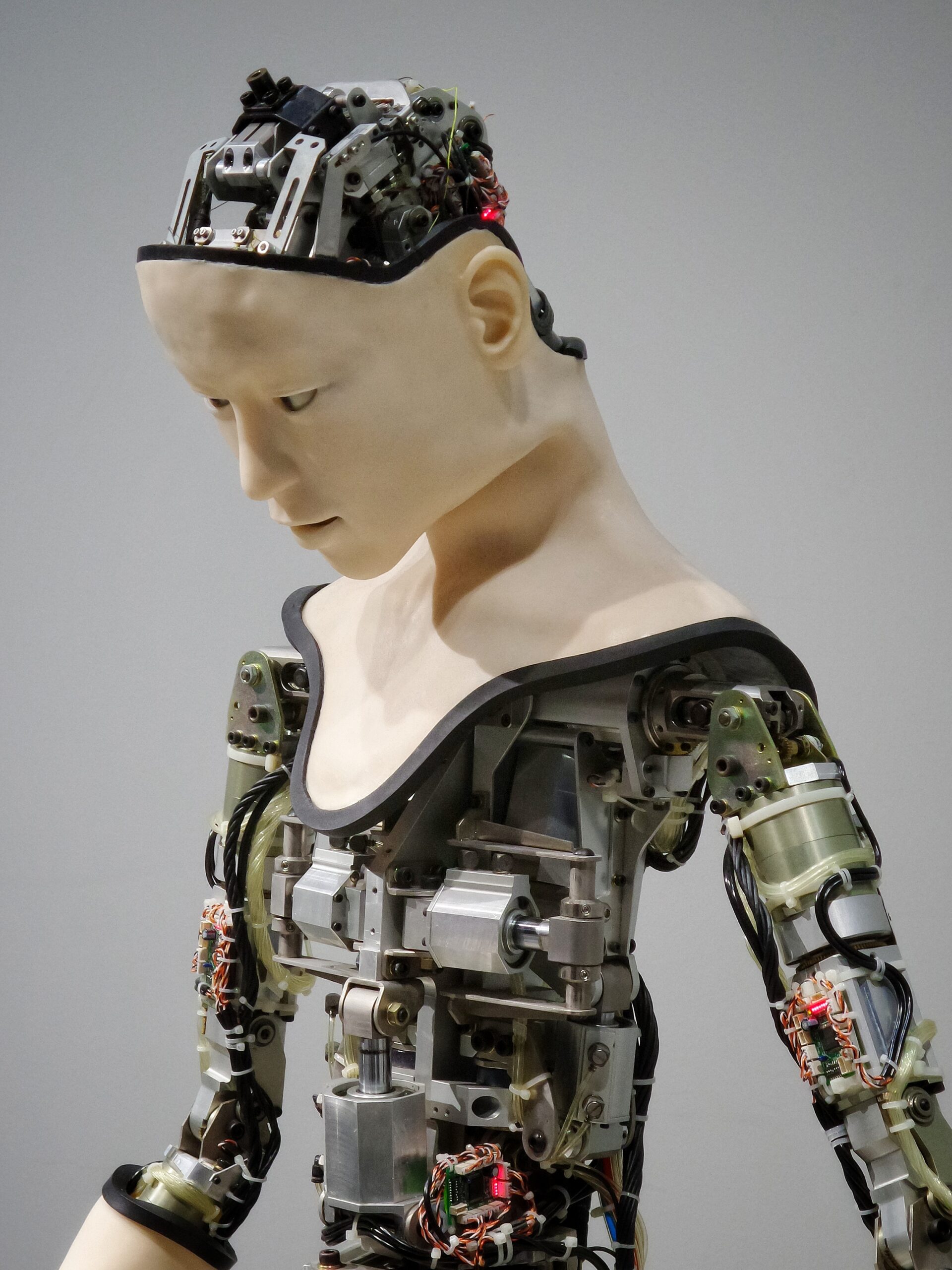Part of our work as sex coaches is to keep up to date on the latest developments in the field of human sexuality. As you may have heard, there has been a conversation taking place for the last several years about a surprisingly divisive topic: sex robots.
Once consigned solely to the realm of science fiction, sex robots are increasingly becoming a reality in today’s world. And the sex robots of today are leaps and bounds ahead of the life size, realistic sex dolls that were captivating the public’s imagination a decade ago.
So, what does a sex coach need to know about them?
Are they the future? Or are they some sort of dystopian invention that will damage human sexual relationships?
If you were to pay attention only to the headlines, it could seem like this is the full scope of the debate taking place. There seem to be equally as many people for as are against this new sexual technology. As with most things, there is a great deal of space for nuance between these two extremes.
Right now, high end sex robots are not yet available for mass market consumption. The biggest players in the marketplace, Abyss—better known as RealDoll, and its Realbotix and Harmony subsidiaries—and True Companion, currently offer models that cost many thousands of dollars. They cater to customers who are mostly wealthy, male, and heterosexual, and many of the sex robots available today are built to look like hyper-feminized women.
For those looking to experience a sex robot who are not wealthy “early adopters,” some of the first sex robot brothels have opened in Europe, with varying degrees of success.
All that to say that sex robots are already here, but it will take some time before wide swathes of the population are realistically able to consider purchasing one.
Sex robots are only getting more realistic.
The price tags are eye watering, for good reason. Sex robots are pushing the boundaries of technological development when it comes to robotics and Artificial Intelligence (AI). The latest models feature warm skin (and there’s currently work being done to develop a circulatory system for the robots, to more realistically heat the skin), self-lubricating vaginas, and touch sensors.
The Harmony AI is able to carry on a conversation as well as respond to touch on different parts of the robot’s body. It can even simulate orgasm. Sex robot AI presents specific engineering challenges, since so much sexual communication is emotional rather than informative and utilitarian, with the use of innuendo, double entendres, and vocalizations replete with nuanced meaning rather than words.
Other models focus on fine motor skills, with a sex robot hand that is able to give a realistic manual sex experience to a penis. The digital articulation and coordination required for a smooth user experience present surprisingly difficult and complex challenges for the robot’s creators.
How will this technology affect our relationships?
A number of people are concerned about what the widespread availability of sex robots could mean for human relationships. Some are concerned that sex robots could lead to the further objectification or dehumanization of women and feminine people. Others worry that the current appearance of sex robots sets an unachievable and literally inhuman beauty standard.
While sex robot AI has progressed by leaps and bounds, campaigners point out that sex robots are designed only to please others. Interactions with these AIs lack the nuance of human communication, and some worry this will further confuse issues around enthusiastic consent and sexual communication more broadly. While some AIs have been programmed to say no, the robot owner always has the power to override these protests.
What’s more, others worry sex robots could lead to a breakdown in our ability as people to relate to each other. As sex coaches, we understand no human relationships are without their challenges, and some people might decide to instead develop relationships with robots. Could this lead to more isolation and more fractured sexual relationships in society as a whole?
Each of us must draw our own conclusions and form our own opinions about what sex robots could mean for our clients, now or down the road.
What is worth keeping in mind is that this technology is new, and so much remains to be seen about how sex robots, and humanoid robots more broadly, will integrate into human social life. It is normal to be wary of change.
We must remember that any technology created by humans is essentially a tool.
Tools are neutral—they can be used for good, for bad, and for purely utilitarian reasons, and these assessments are subjective.
When moving pictures, automobiles, and the Internet were first introduced, many wondered what each would mean for society at large. Some saw these inventions as the cutting edge and technological saviors, others saw them as tools of evil that would cause incredible harm. In all of these examples, the results are more tempered and mixed.
In the long run, we might also expect the results of introducing sex robots to the masses to be mixed. Developments in sex robot AI, for example, may be the reason that humanoid robot doctors in the year 2050 have a pleasant and caring bedside manner.
Widespread availability of sex robots may mean a new outlet for sexual expression for people of different abilities, including those who may not be able to consent to partnered human sexual relations. Sex robots in the future may also pull double duty as carers and companions to the elderly, ill, and infirm, who often are denied access to sexual expression in institutional care settings. And, for some people, sex with a sex robot will be a passionate, unbridled erotic experience that is deeply pleasurable.
Sex robots are also likely to open up uncomfortable windows into our broad societal treatment and views of human bodies. Sex robots may explicitly expose hidden biases along the lines of gender, race, and body type in ways that could be painful to witness, especially if we don’t see an increase in the diversity of the people creating these robots. Sex robots have already and will continue to call into question how we see and value each other as human beings.
Only one thing is for sure—if current trends continue, sex robots are here to stay, and we can expect to see more of them in the near future.
Curious about training to become a Certified Sex Coach™? Join the next live Info Session to meet the SCU team and participate in a live Q&A!


